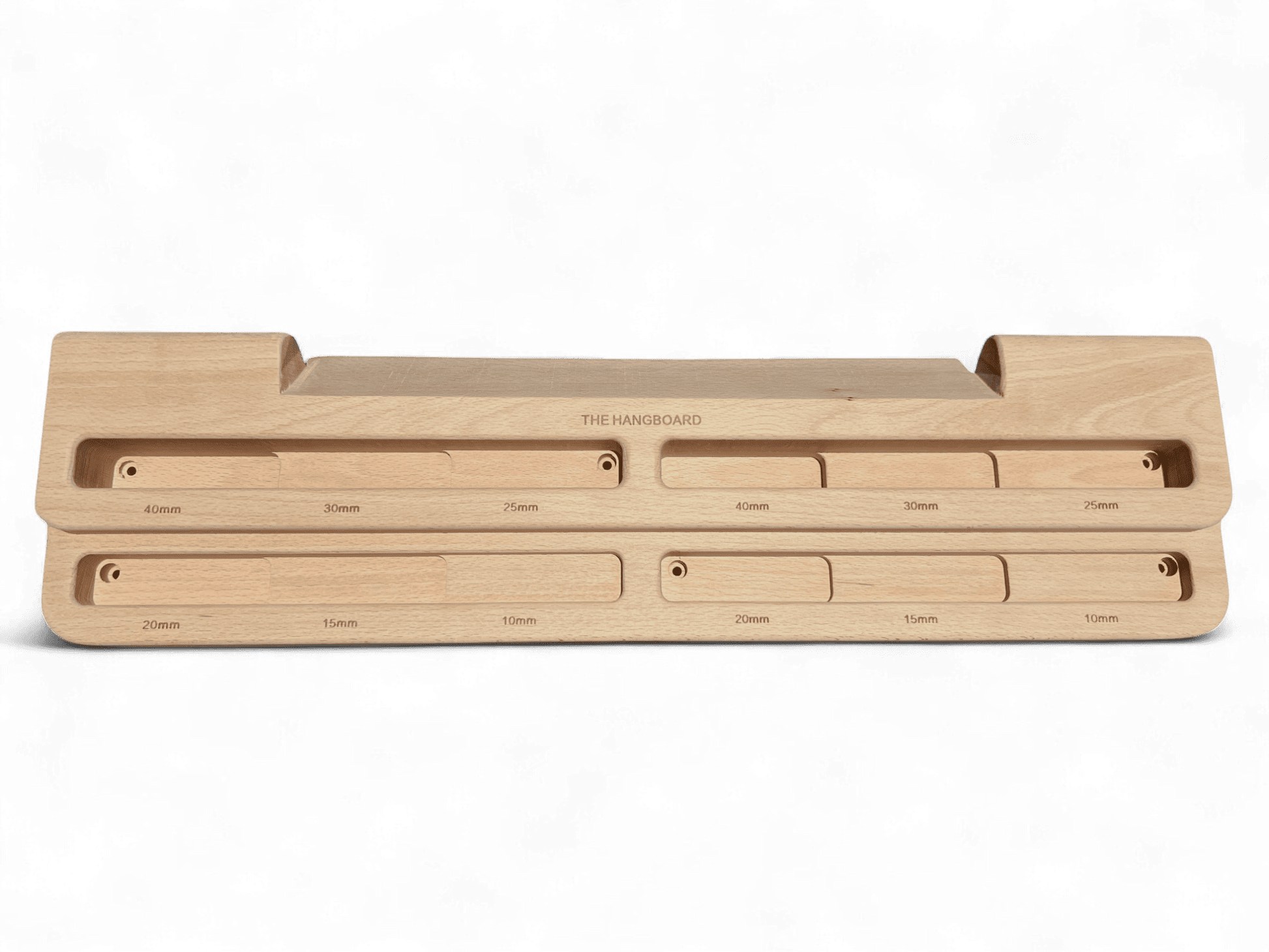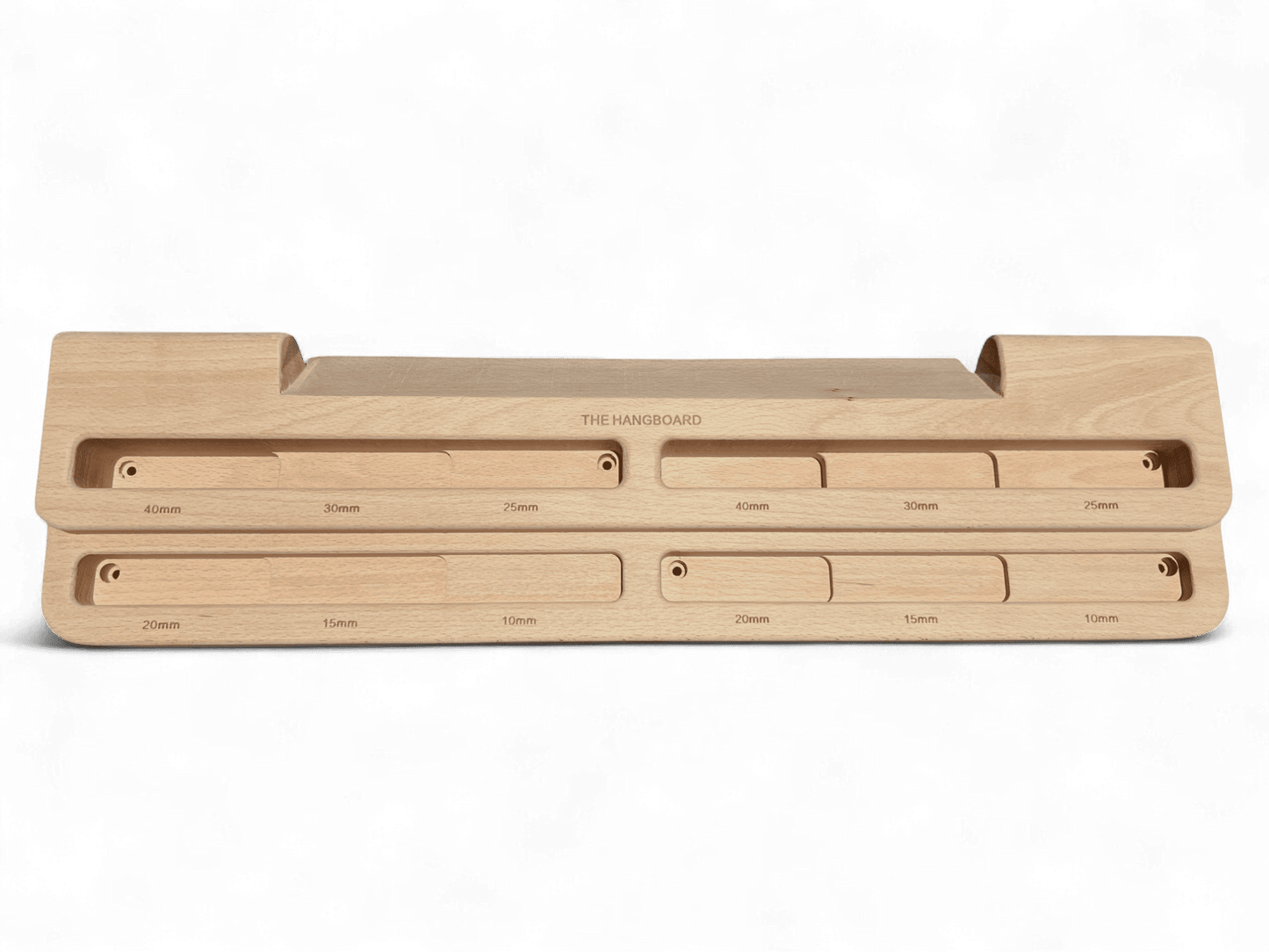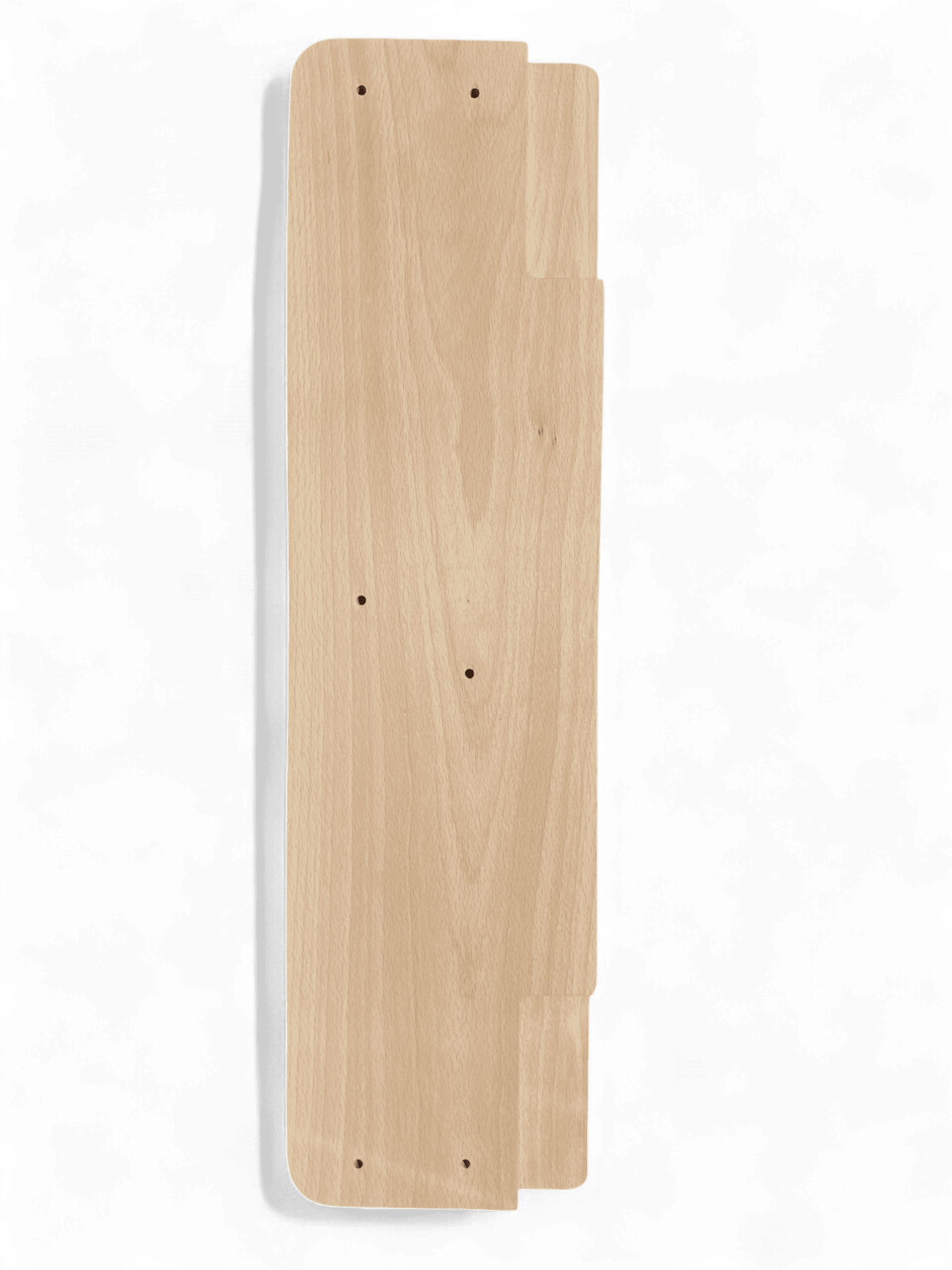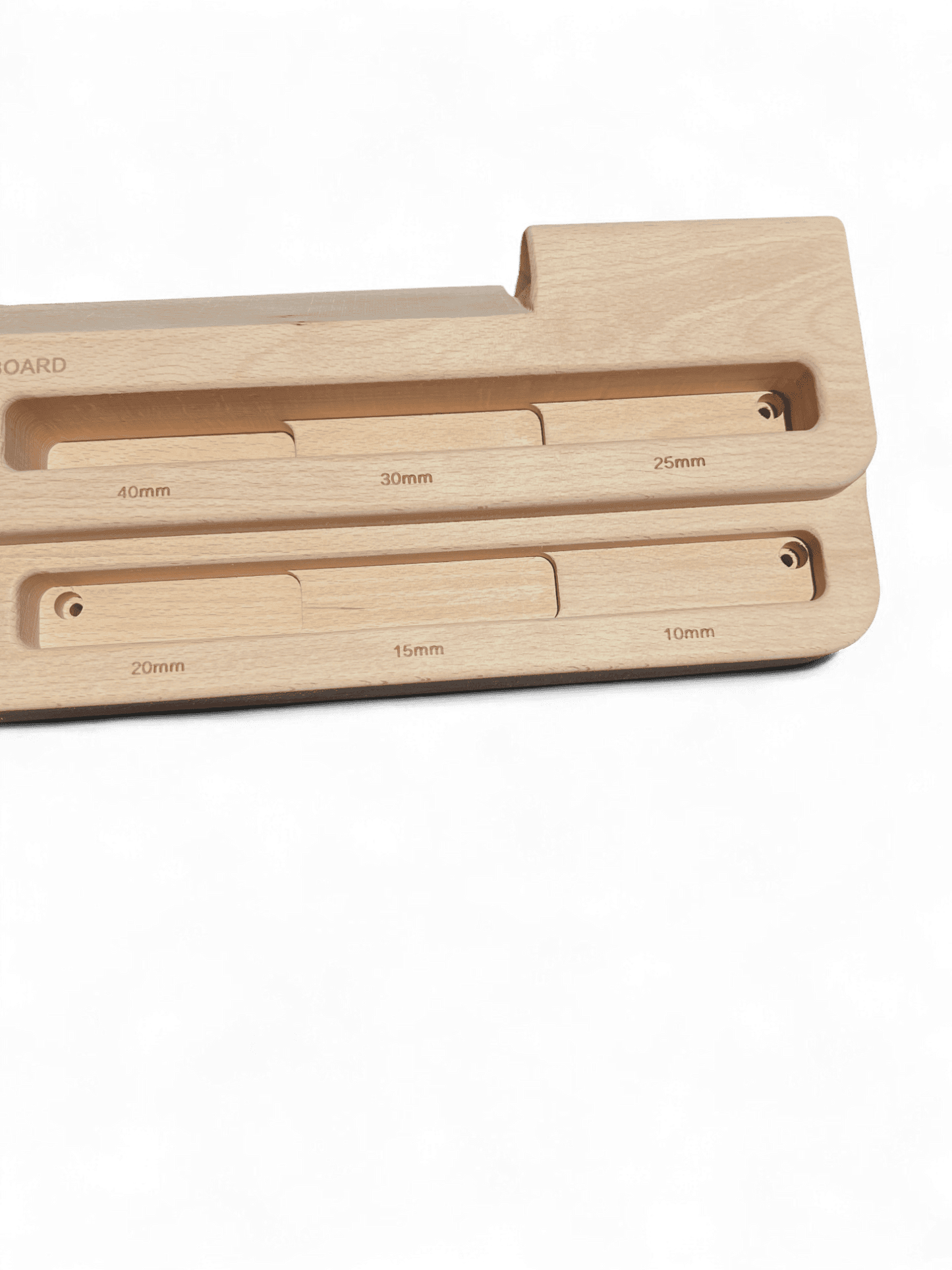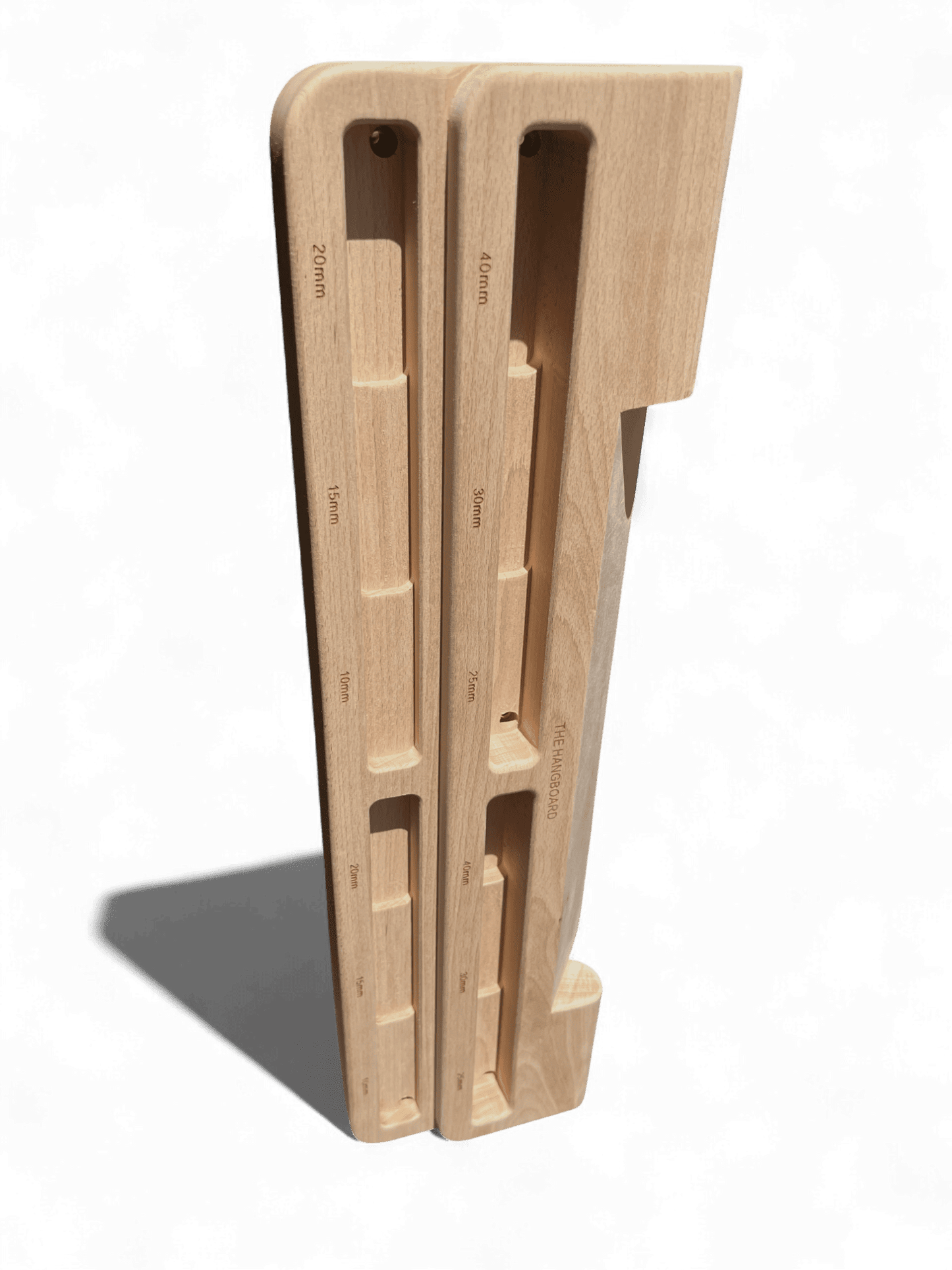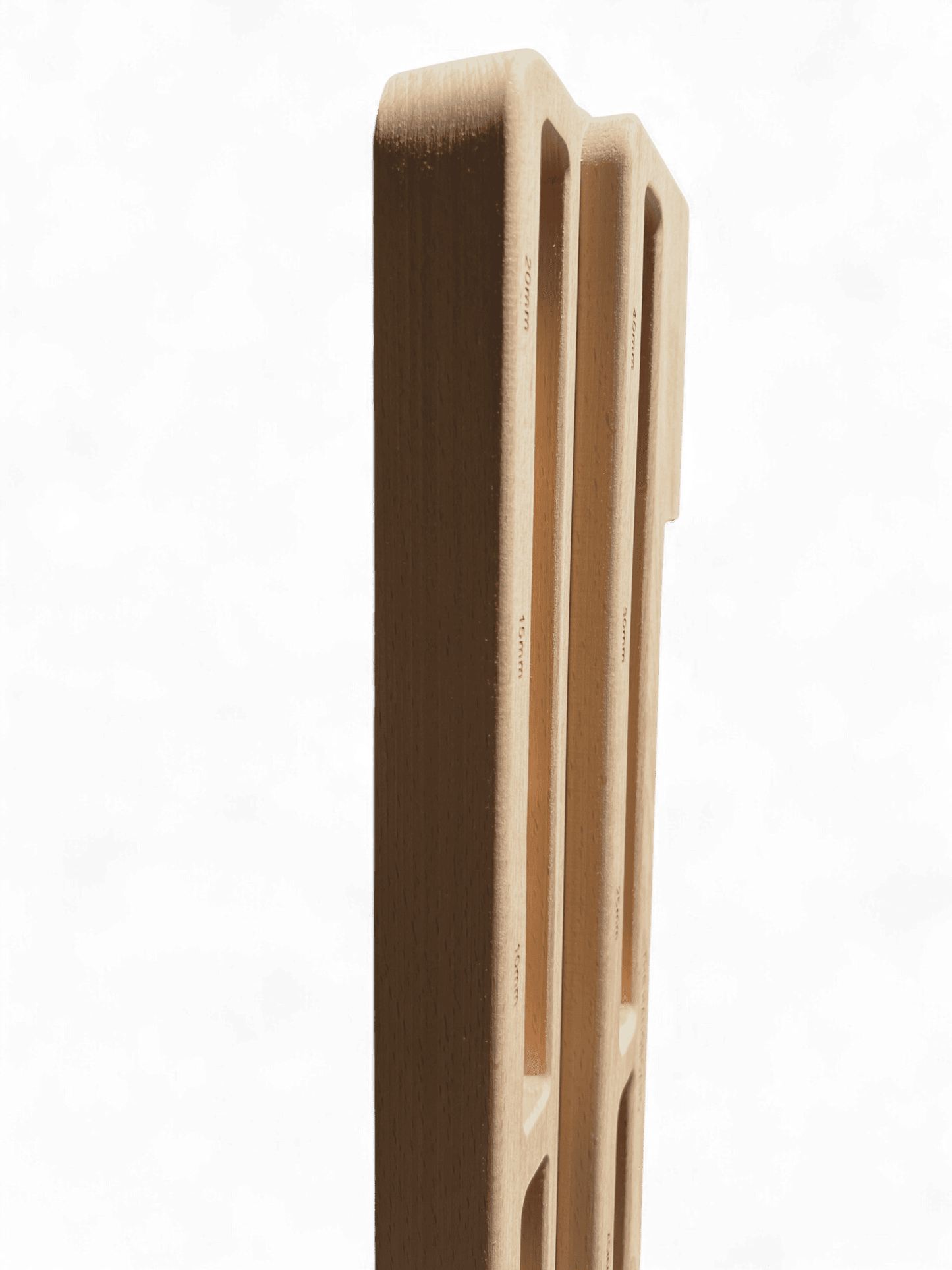For climbers, a hangboard is an indispensable tool for developing grip strength and endurance. However, mounting a hangboard can be a challenge, especially for those who rent their homes or lack the space. This is where a hangboard pull-up bar comes into play. This setup allows climbers to train effectively without drilling into walls. In this article, we’ll explore how to mount a hangboard on a pull-up bar and examine the advantages and disadvantages of this approach. If you are looking for a traditional way to mount your hangboard read here!
Understanding Hangboard Pull-Up Bars / Door Frame Hangboards
A hangboard pull-up bar combines the functionality of a hangboard with the convenience of a pull-up bar. This setup is ideal for climbers who want a non-permanent, versatile training station in their home. There are primarily two ways to mount a hangboard to a pull-up bar: using a portable hangboard with ropes or creating a backboard mount.
Method 1: Portable Hangboard with Rope

How to Set It Up
- Select a Portable Hangboard: Choose a hangboard designed for portability, typically equipped with eyelets for hanging.
- Prepare the Ropes: Use strong, durable ropes or cords. Climbing accessory cords work well for this purpose.
- Attach to the Pull-Up Bar: Tie the ropes securely to the pull-up bar, ensuring the hangboard hangs at the desired height.
Advantages
- No Drilling Required: This method doesn’t require drilling or permanent fixtures, making it ideal for renters or those who prefer not to alter their living space.
- Easy to Set Up and Remove: It’s straightforward to set up and can be taken down quickly, offering flexibility and convenience.
- Portability: The hangboard can be easily transported, allowing climbers to train anywhere there's a bar to hang it from.
Disadvantages
- Stability Issues: The hangboard may swing or rotate, making it challenging to train on smaller holds.
- Height Limitations: The height of the pull-up bar limits how high the hangboard can be hung, which may not be ideal for taller individuals.
Method 2: Creating a Backboard Mount

How to Set It Up
- Build a Backboard: Construct a sturdy backboard from plywood. The size should be sufficient to mount the hangboard and fit within the width of the pull-up bar. For a better breakdown on how to DIY your own backboard read here.
- Attach the Hangboard: Secure the hangboard to the backboard using screws, ensuring it’s firmly in place.
- Mount on the Pull-Up Bar: Place the backboard over the pull-up bar and secure it with straps or clamps.
Advantages
- Stability: This method offers a more stable platform for the hangboard, reducing movement during training.
- Customizable Height: The height of the hangboard can be adjusted by altering the length of the straps or cords.
- Durability: A well-constructed backboard mount can support more weight and withstand rigorous training sessions.
Disadvantages
- Complex Setup: Building a backboard mount requires more effort, tools, and materials.
- Less Portable: This setup is less portable compared to the rope method and may be more a bit harder to store when not in use.
Best Practices for Training on a Hangboard Pull-Up Bar
Regardless of the mounting method, here are some tips for effective hangboard training:
- Start Gradually: Begin with easier holds and gradually progress to more challenging grips.
- Consistent Training: Regular, short sessions are more beneficial than sporadic, long ones.
- Listen to Your Body: Pay attention to any signs of pain or discomfort in your fingers, hands, and arms.
- Combine with Pull-Ups: Integrate pull-ups into your routine to enhance upper body strength, complementing your hangboard exercises.
Conclusion
Mounting a hangboard on a pull-up bar is a smart solution for climbers who prefer a non-permanent, versatile training setup. Whether you opt for a portable hangboard with ropes or a backboard mount, both methods offer unique advantages. By understanding these techniques and implementing best training practices, climbers can effectively enhance their grip strength and climbing performance without the need for permanent installations.

